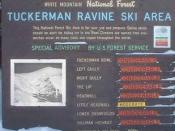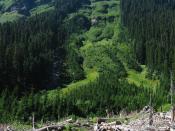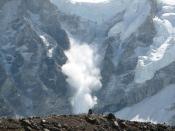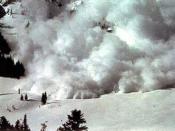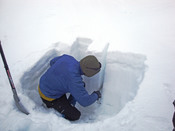An avalanche is a rapid movement of snow down a slope as a result of structural weaknesses. They occur under three main circumstances, snow, slab and slush. Slab avalanches happen when layers of snow build up following each snowfall event, initially the density is low, but as more layers build up the pressure increases and air is squeezed out to form firn, however sometimes ice crystals grow and create voids in the snow, this creates weaknesses and thus avalanches can occur. For an avalanche to occur the slope must be 25-40 degrees. Other common circumstances that cause avalanches are when temperatures rapidly melt causing snow to melt, or when rain falls on snow, increasing the weight. Spring is the most common time for avalanches because it is warmer and there is a lot of snow, due to the heavy winter falls.
How can the effects of avalanches be managed?
The effects of avalanches can be managed in many ways, for example in the Alps a variety of methods are used.
Controlled explosions that cause lots of much smaller avalanches allow the authorities to get rid of potentially hazardous snow drifts. Fences above an avalanche slope are used to trap snow from falling onto the hazardous avalanche slopes. Power lines are protected using wedges which are placed in front of them, these deflect the snow away, as is the case with transport routes, sheds are built over the routes to protect the train lines etc. Houses are made hazard resistant as well, with roofs that slope with the direction of a potential avalanche. Another key method in reducing the chance of a "disaster" is too map the area. Today maps are made which categorize areas as high potential, low potential and no hazard. These maps are based on long term records, field observation and run out distance. This allows people to assess where to live and companies as to where to build there resorts. But this method of management is expensive and is not implemented in more remote places of the world, Himalayas etc. At Galtur in 1999 there was an avalanche that killed 30 people; here is a clear example of warnings that were not listened to. A warning was issued three days prior to the avalanche, but the vast majority of people stayed. The authorities did not issue an active evacuation though.
